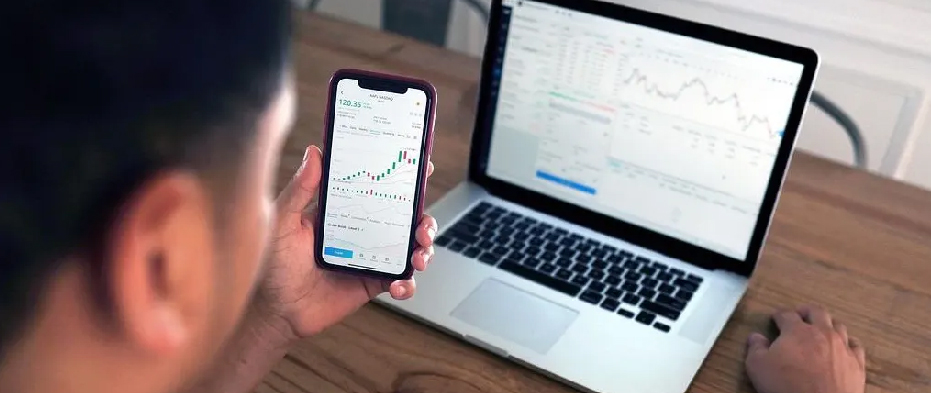Options trading seems extremely complex. Well, do you know what exactly options trading is? If you are looking for a simple understanding of this trading, this article is perfect for you.
What is Options Trading?
This trading gives traders the right, not the obligation, to sell or purchase a fixed security on a fixed date at a fixed price. An option is a contract that is linked to an underlying asset, such as stocks or another security. Options contracts are great for specific periods, which could be as short as a day or as long as a couple of years.
When traders purchase an option, they have the right to trade the underlying asset, but they are not restricted from doing so. If the trader decides to do so, it is called exercising the option. When traders sell an option, they must complete the contract. Selling options is where things get more complex, and traders could be at risk of losing an unlimited amount.
Understanding the Terms of Option Trading
Traders use some specific terms when discussing options trading. Below, we mentioned some key terms.
Holders and Writers
The purchaser of an option is known as the holder, while the dealer is known as the writer. For a call, the holder has permission to purchase the underlying market from the writer. For a put, the holder has permission to sell the underlying market to the writer.
Premium
Premium is the fee paid by the holder to the writer for the option contract.
Strike Price
The cost at which the holder can purchase (calls) or sell (puts) the fundamental market on the option’s expiry date.
Expiry Date
The date on which the options contract terminates is known as the expiry date.
In the Money
When the fundamental market’s price is above the strike (for a call) or below the strike (for a put), the option is known as in the money. It means that if the buyer exercised the option, they would be able to trade at a better price than the current market price is called in the money options trading.
Out of the Money
When the current market’s price is below the strike (for a call) or above the strike (for a put), the option is known as out of the money. If an option is out of the money at the expiry date, exercising the option will cause a loss.
At the Money
When the fundamental market’s price is the same as the strike price or very near to being equal to the strike, the option is called at the money in options trading.
Break-even Point
When the current market’s price is equal to an option’s strike plus premium (for a call) or strike minus premium (for a put). It means your trade is known as the break-even point. This means it is not making a profit or a loss.
Types of Options Trading
There are two main types of options, and they both allow clients to make money regardless of whether an asset goes up or down.
- Call Option: A call option allows the trader to purchase the fundamental stock at the strike price up until the date of the option’s expiration. When the asset cost rises, the call option increases in value, all else equal. If you are purchasing a call option, you usually predict the asset price to rise. If you are selling a call option, you are probably predicting the asset price to stay flat or decline.
- Put Option: A put option allows the trader to sell the fundamental asset at the strike price up until the date of the option’s expiration. When the asset price falls, the put option increases in value, all else equal. If you are purchasing a put option, you usually predict the asset price to fall. If you are selling a put option, you are probably predicting the asset price to stay flat or rise.
How Put Options Trading Works
Let’s say you just assume the shares of a particular stock are going to fall based on poor earnings data. They are currently trading at $30 per share. You buy a put option for 100 shares at a fixed price of S30 per share with a premium of $1 per share, costing you $100. Then, before the option’s date of expiration, shares fall by half to $15.
If you exercise your put option, you could sell the 100 shares at the higher $30 per share price. It means you would profit by $15 per share, less the $1 premium. It means you would get a net profit of $1,400. However, if the fundamental stock price rises and the option contract expires, you will lose your premium; that cost is $100.
How Call Options Trading Works
Instead of assuming shares of a particular stock to fall, let’s say you expect they will rise. Therefore, you buy a call option for 100 shares with a fixed price of $100 per share and a premium of $5 per share. The cost of the premium is $500. Then, before the option’s expiration date, shares gain $50 to a price per share of $150.
If you exercise your call option, any appreciation above the strike price shows your payout. So, if you purchase the 100 shares at the strike price of $100 per share, the underlying stock is now trading for $150 per share. It means you would get a profit of $50 per share for 100 shares, or $5000. Less the $5 per share premium paid to the option seller means you would net $4500. However, if the fundamental stock’s price falls and the options contract expires, you will lose your $500 premium.
Bottom Line
In this article, we have covered all the basics of what is options trading and different option terms as well as their types. Additionally, we also discuss how this trading is done, whether it is a call option or a put option. However, option trading is all about the timing of the market reaction, and that is a dangerous game to be playing with investing a couple of dollars.

